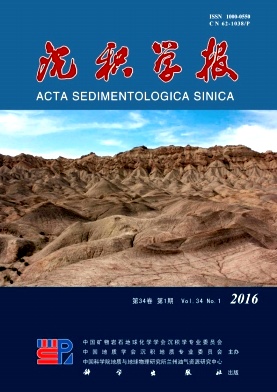Paleo-environmental Evolution in the Central Shelf of the North Yellow Sea Since mid-MIS3
doi: 10.14027/j.cnki.cjxb.2016.01.009
- Received Date: 2014-11-06
- Rev Recd Date: 2015-04-07
- Publish Date: 2016-02-10
-
Key words:
- mid-MIS3 /
- North Yellow Sea /
- Paleo-environment /
- Younger Dryas event
Abstract: The North Yellow Sea is a typical semi-enclosed epicontinental sea and is characterized by strong land-sea interaction and paleoenvironmental changes during the Late Quaternary with sea-level fluctuations. In this study, based upon analysis of lithology, grain-size, micropaleontology and AMS14C dating for Core DLC70-2, located in the central shelf of the North Yellow Sea (NYS), the paleo-environmental evolution can be ascertained. The study suggests that the sedimentary environmental evolution in the central shelf of NYS since mid-MIS3, which was well corresponding to the relative sea level changes, shows prominent multistage characteristics. From 22.89 m to 18.50 m (43 639~42 558 cal yr B.P.), an estuarine facies, developed by sea level rise in the middle of MIS3, and there exists an apparent sedimentary hiatus between the facies and its overlying strata. The seawater arrived at the study area since 14 602 cal yr B.P. and a 18.50 m thick sediment formed from then on, which can be divided into estuarine filling facies (18.50~10.02 m, 14 602~12 602 cal yr B.P.), riverine floodplain facies (10.02~5.10 m, 12 602~10 357 cal yr B.P.)and littoral- neritic facies (5.10~0 m, 10 357~4 913 cal yr B.P.) from the bottom up, corresponding to the process of sea level rising since Last Glacial Maximum, the short stagnated period of sea level during the Younger Dryas event, and the process of sea level rising during the early-middle Holocene, respectively. The section from 10.02 m to 5.10 m (12 602~10 357 cal yr B.P.), a hard clay, the result of the riverine floodplain, may be closely correlated with the global impact of Younger Dryas event and can be regard as a significant evidence of the response of the NYS area to it.
| Citation: | CHEN XiaoHui, LI RiHui, LAN XianHong, WANG Yan. Paleo-environmental Evolution in the Central Shelf of the North Yellow Sea Since mid-MIS3[J]. Acta Sedimentologica Sinica, 2016, 34(1): 102-110. doi: 10.14027/j.cnki.cjxb.2016.01.009 |






 DownLoad:
DownLoad: